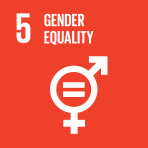Definitions, debate framework and research purpose

- Author: United Nations
- Main Title: Social Panorama of Latin America 2005 , pp 176-177
- Publication Date: September 2006
- DOI: https://doi.org/10.18356/aac3273a-en
- Language: English
For the purposes of this work, broadly speaking demographic inequalities refer to three aspects of demographic change: (i) risk of early mortality, which is larger the lower the socio–economic level of individuals and communities; (ii) final fertility intensity (that is, the number of children women have) which increases as the socio–economic level of individuals and communities decreases; (iii) the timing of fertility which is biased towards earlier ages at lower socio–economic levels, as seen in adolescent maternity levels that decrease higher up the socio–economic scale. These three types of disparity do not cover the full, complex range of sociodemographic inequalities, but they do form the core of what are known as the “demographic dynamics of poverty”, and thus warrant particular attention.
-
From This Site
/content/books/9789213633847s009-c003dcterms_title,dcterms_subject,pub_keyword-contentType:Journal -contentType:Contributor -contentType:Concept -contentType:Institution105



